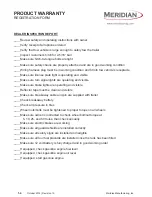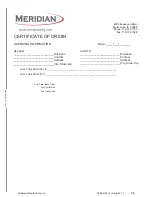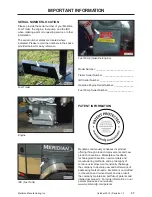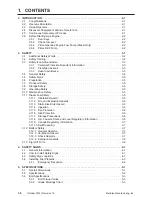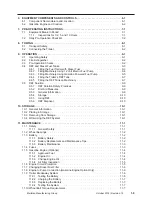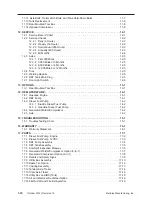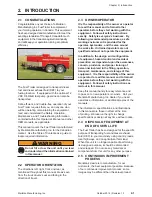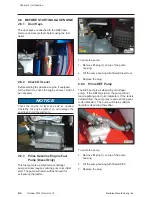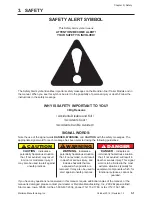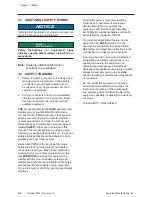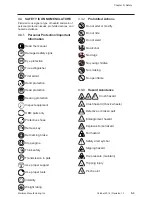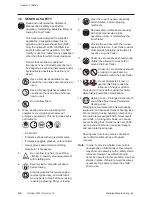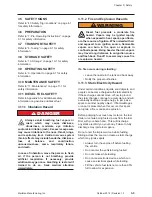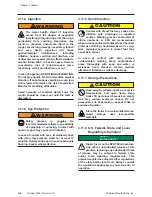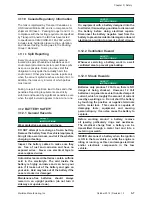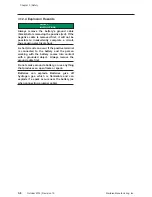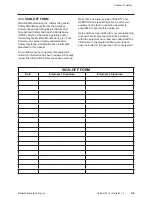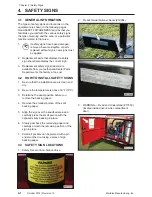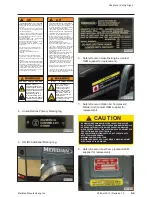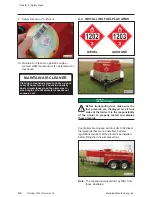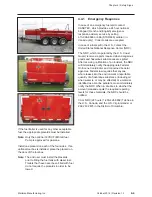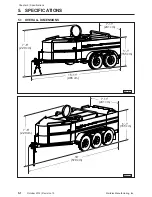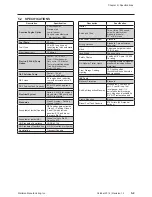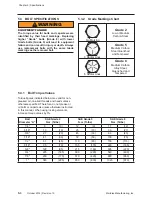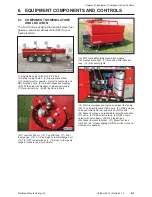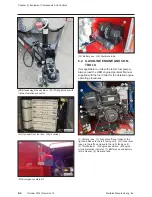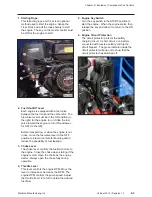
Meridian Manufacturing, Inc.
October 2014 | Revision 1.0
3-5
3.5 SAFETY SIGNS
Refer to “4.3 Safety Sign Locations” on page 4-1
for safety information.
3.6 PREPARATION
Refer to “7. Pre-Operating Instructions” on page
7-1 for safety information
3.7 TRANSPORT SAFETY
Refer to “8. Towing” on page 8-1 for safety
information.
3.8 STORAGE SAFETY
Refer to “10. Storage” on page 10-1 for safety
information.
3.9 OPERATING SAFETY
Refer to “9. Operation” on page 9-1 for safety
information.
3.10 MAINTENANCE SAFETY
Refer to “11. Maintenance” on page 11-1 for
safety information.
3.11 DIESEL FUEL SAFETY
Refer to Appendix A for additional safety
information on gasoline and diesel fuel.
3.11.1 Inhalation Hazard
DANGER
Always avoid breathing fuel vapors or
mists which may cause dizziness,
drowsiness, moderate eye irritation,
and/or skin irritation (rash). Excessive exposure
may cause irritations to the nose, throat, lungs,
and respiratory tract. Central nervous system
(brain) effects may include headache, dizziness,
loss of balance and coordination,
unconsciousness, coma, respiratory failure,
and death.
In case of inhalation, move the person to fresh
air. If the person is not breathing, provide
artificial respiration. If necessary, provide
additional oxygen once breathing is restored if
trained to do so. Seek medical attention
immediately.
3.11.2 Fire and Explosion Hazards
WARNING
Diesel fuel presents a moderate fire
hazard. Vapors may be ignited rapidly
when exposed to heat, spark, open flame,
or other source of ignition. When mixed with air
and exposed to an ignition source, flammable
vapors can burn in the open or explode in
confined spaces. Being heavier than air, vapors
may travel long distances to an ignition source
and flash back. Runoff to sewer may cause fire
or explosion hazard.
If a fire occurs during refuelling:
• Leave the nozzle in the tank and back away.
•
Notify the proper authorities.
3.11.3 Static Electricity Hazard
Under certain conditions, liquids, solid objects, and
people can become charged with static electricity.
If these charges cannot move or flow to ground,
the static charges continue to accumulate, and will
eventually develop enough energy to jump as a
spark to another nearby object. If flammable gas
or vapor is present when this occurs, this spark
can ignite a fire or cause an explosion.
Before pumping fuel, touch any metal on the fuel
trailer or vehicle being fueled, away from the fuel
filler, with your bare hand. This will discharge
any static electricity on your body. Failure to fully
discharge may ignite fuel vapors.
Do not enter the implement cab while fuelling.
Sliding across the seat can create a static charge
which may ignite vapors.
• Always turn the engine off before fuelling
the vehicle.
• Do not enter the vehicle being fuelled.
• Do not smoke while fuelling.
• Do not use electronic devices, which can
cause an electrical spark while fuelling.
• Fill the vehicle fuel tank no more than 95%
full to allow for expansion.
Chapter 3 | Safety
Содержание Fuel Express
Страница 1: ...Certified For Canadian Market ...
Страница 6: ......
Страница 92: ...17 20 October 2014 Revision 1 0 Meridian Manufacturing Inc APPENDIX A ...
Страница 93: ...Meridian Manufacturing Inc October 2014 Revision 1 0 17 21 ...


